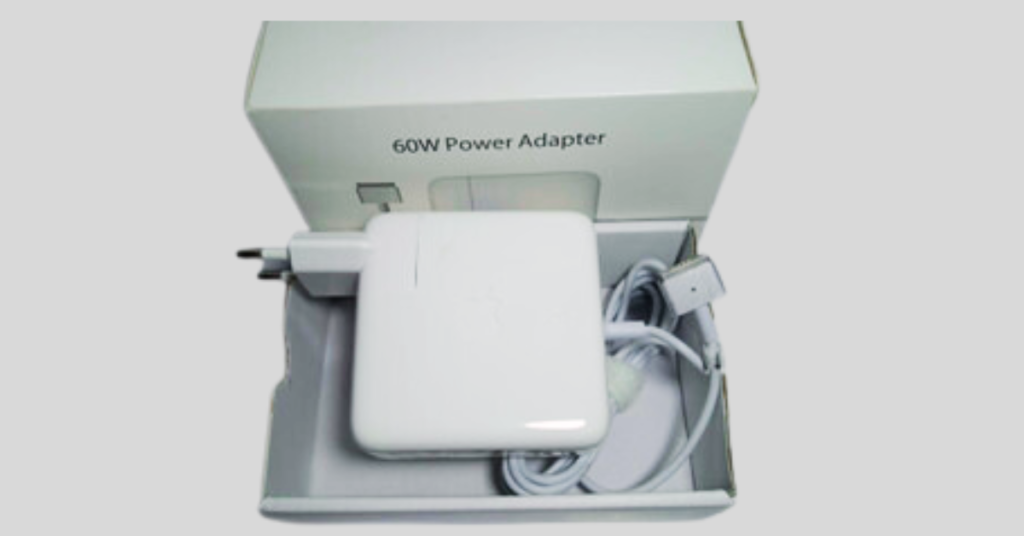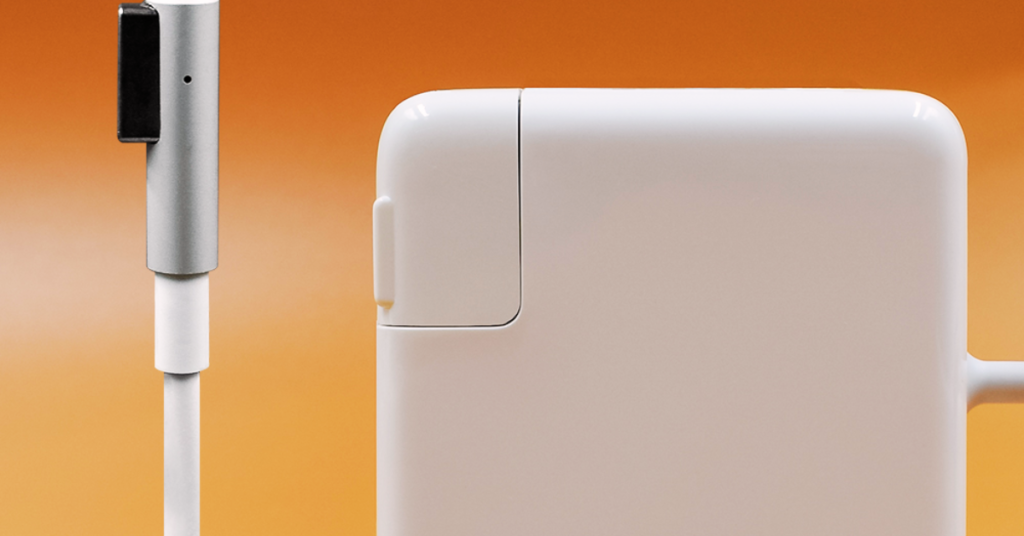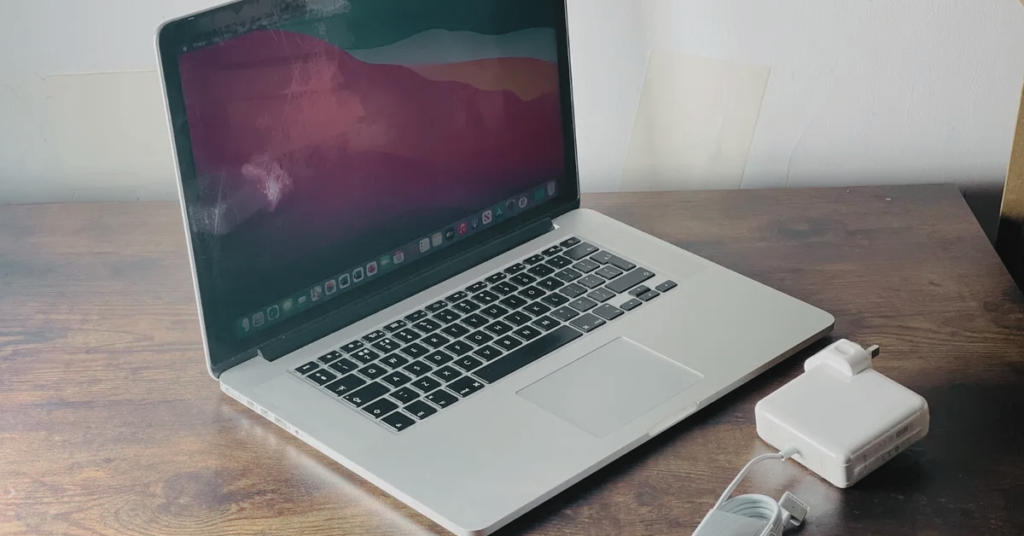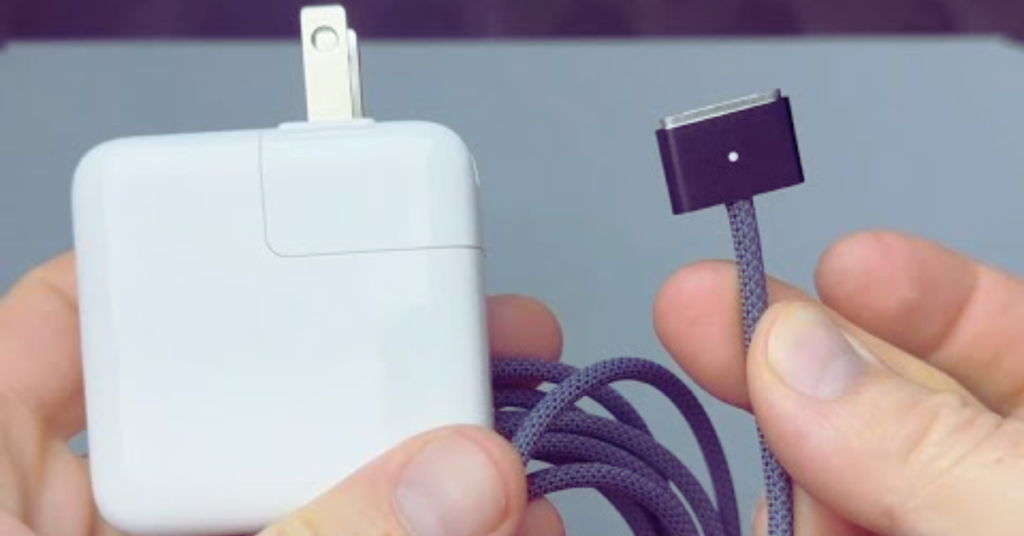If you own a 2013 MacBook Pro, you know how crucial a reliable charger is to keep your device powered up. The quest for the perfect charger can be daunting, considering the many options available. In this article, we’ll dive into the intricacies of the 2013 MacBook Pro charger, explore common issues, and guide you in making an informed and safe choice.
Understanding the 2013 MacBook Pro Charger

The 2013 MacBook Pro charger isn’t just a power source; it’s a vital component designed to complement your device’s functionality. Equipped with a MagSafe connector, this charger offers unique features, ensuring a secure connection while allowing for a quick and safe disconnection.
Common Issues with Chargers
Despite the advancements in technology, users often need help with generic chargers. These issues range from poor build quality to compatibility problems, emphasizing the significance of investing in an authentic charger to avoid potential damage to your 2013 MacBook Pro charger
Identifying Genuine Chargers
Distinguishing genuine Apple chargers from counterfeit ones is crucial. We’ll provide you with a guide to help you make an informed choice, stressing the importance of purchasing from authorized sellers to ensure the longevity and safety of your device.
Compatibility Concerns
Choosing the right charger goes beyond authenticity. Compatibility issues can arise with third-party chargers, potentially causing more harm than good. We’ll share tips on selecting a charger that seamlessly integrates with your 2013 MacBook Pro.
Safety Measures
Safety should always be a top priority when dealing with chargers. From avoiding overheating to preventing potential hazards, we’ll outline essential safety measures to protect you and your 2013 MacBook Pro charger
Handle with Care
- Treat your charger gently, avoiding unnecessary bending or twisting of the cable. This helps prevent damage to the internal wires and ensures a longer lifespan for your charger.
Avoid Overheating:
- Overheating can pose a risk to both your charger and your 2013 MacBook Pro charger. Keep the charger in a well-ventilated area, and avoid covering it with fabrics or placing it on surfaces that retain heat. Regularly check for any signs of overheating during use.
Use the Right Power Source:
- Ensure that your charger is connected to a stable and appropriate power source. Avoid using incompatible power adapters, as they may not provide the correct voltage and could damage your charger and 2013 MacBook Pro charger.
Protect from Pets:
- Pets, especially those with a penchant for chewing, can threaten your charger cable. Keep the cable out of their reach and use protective measures like cable organizers or covers to prevent accidental damage.
Regularly Check for Damage:
- Periodically inspect your charger for any visible damage, including frayed wires, exposed cables, or bent connectors. If you notice any issues, replace the charger promptly to avoid potential safety hazards.
Adhering to these safety measures ensures the longevity of your 2013 MacBook Pro charger and minimizes the risk of accidents and potential damage to your device. Prioritizing safety in your charging practices contributes to a secure and reliable charging experience.
Cost Considerations
While genuine chargers may seem more expensive initially, we’ll delve into the cost-effectiveness of investing in authenticity. Analyzing the potential long-term savings and benefits might change how you perceive your charger’s value.
User Reviews and Recommendations

What better way to gauge a product’s reliability than through user reviews? We’ll explore customer feedback to highlight positive and negative experiences, offering insights into reputable brands and products.
Tips for Extending Charger Lifespan
Prolonging the lifespan of your charger is not only practical but also cost-effective. We’ll share valuable tips on maintenance practices to ensure optimal charging performance for years.
Unplug when not in use: Disconnect your charger while not charging your MacBook Pro to prevent unnecessary wear and tear.
Avoid bending or twisting: Keep the cable straight and avoid bending it excessively to prevent damage to the wires inside.
Use cable organizers: Keep your charger organized with cable organizers to minimize stress on the cable near the connector.
Please handle with care: Treat your charger with care; avoid yanking it out of the socket or forcefully pulling the cable.
Store properly: When not in use, store your charger in a cool, dry place, avoiding extreme temperatures and humidity.
Avoid sharp objects: Keep the charger away from sharp objects that could damage the cable’s insulation.
Use the appropriate power source: Ensure your charger is connected to a stable power source, avoiding power fluctuations that may harm the charger.
Regularly check for damage: Periodically inspect your charger for any visible damage, and if you notice frayed wires or other issues, replace it promptly.
Related:Best Macbook Pro Charger Cord 2024
Please keep away from pets: Pets may mistake charger cables for toys, leading to unintentional damage; store them out of reach.
Avoid extreme temperatures: Exposing your charger to extreme heat or cold can affect its performance; store and use it within the recommended temperature range.
Don’t pull from the cord: When disconnecting your charger, firmly grasp the plug and pull it from the socket rather than pulling on the cord.
Secure during travel: When carrying your charger in a bag, ensure it’s well-protected to prevent any damage during transit.
Use a cable protector: Invest in a cable protector to add an extra layer of protection to the vulnerable areas of your charger cable.
Regularly clean the connector: Dust and debris can accumulate in the connector, affecting the charging connection; clean it gently with a small brush or compressed air.
Avoid overloading power strips: Plugging too many devices into a single power strip can lead to power fluctuations; use a dedicated outlet when possible.
Consider a charger case: A dedicated case can provide additional protection against wear and tear if you frequently travel with your charger.
Remember, taking these simple steps can go a long way in extending the lifespan of your 2013 MacBook Pro charger and ensuring a reliable charging experience.
Alternative Charging Solutions
Is there more than one way to charge your 2013 MacBook Pro? We’ll explore alternative charging methods, including wireless options, and discuss their compatibility with your device.
Tech Upgrades and Compatibility
As technology evolves, compatibility issues may arise. We’ll address potential concerns for users with upgraded MacBook Pro models and provide solutions to ensure seamless charging.
DIY Troubleshooting

Before seeking professional help, there are simple troubleshooting steps you can take to resolve charging issues.
Check the Power Outlet: First, ensure the power outlet is functioning. Sometimes, the issue might be with the socket rather than the charger.
Inspect the Charger Cable: Examine the entire length of the cable for any visible damage, fraying, or kinks. If you spot any issues, it’s a clear sign to replace the cable.
Clean the MagSafe Connector: Dust and debris can accumulate on the MagSafe connector, affecting the connection. Clean it with a small brush or compressed air to ensure a secure fit.
Try a Different Outlet: Experiment with different power outlets to rule out the possibility of a faulty socket causing the charging problem.
Check for Software Issues: Sometimes, software glitches can impact charging. Ensure your 2013 MacBook Pro charger is running the latest updates and restart the device to see if it resolves the issue.
Inspect the MagSafe Port: Look closely at the MagSafe port on your MacBook Pro for any debris or foreign objects. Clean it gently with a small brush to guarantee a proper connection.
Verify the Charging Status: Check your MacBook Pro’s battery status to confirm its recognition and charging. If not, there might be a deeper issue that requires professional attention.
Use a Different Charger: Try charging your MacBook Pro with another compatible charger. This can help identify the issue with the charger or the laptop.
Reset the System Management Controller (SMC): Performing an SMC reset often solves charging-related issues. Follow Apple’s guidelines for your specific MacBook Pro model.
Check for MagSafe Light Indicator: The MagSafe connector has a light indicator. If it’s not lighting up, it might indicate a problem. Try repositioning the connector or using a different MagSafe charger.
Inspect for Heating Issues: Overheating can affect charging. Ensure your 2013 MacBook Pro charger is not excessively hot during charging, and if it is, let it cool down before attempting to charge again.
Test with Another Device: If available, try using your 2013 MacBook Pro charger on a different device with a similar MagSafe port to confirm whether the issue is specific to your laptop.
Do Read: Best 2012 MacBook Pro Charger: A Comprehensive Guide
Review System Preferences: Go to “System Preferences” on your 2013 MacBook Pro charger and navigate to “Energy Saver.” Check and adjust settings to optimize power management.
Look for Error Messages: If there are error messages related to charging, note them. It can provide valuable information when seeking assistance online or from Apple support.
Inspect the Battery Health: Open “System Report” on your MacBook Pro and check the battery’s health. A degraded battery might need to be fixed to hold a charge effectively.
Following these DIY troubleshooting steps, you can address common charging issues with your 2013 MacBook Pro charger Remember, if the problem persists, it’s advisable to seek professional assistance to ensure the long-term health of your device.
Customer Support and Warranty
Prioritizing customer support and warranty considerations is paramount when selecting a charger for your 2013 MacBook Pro charger. Opt for genuine products from authorized sellers, ensuring access to reliable customer assistance in case of any issues. Additionally, a robust warranty provides peace of mind, protecting against unexpected faults. Choosing a charger with solid customer support and a comprehensive warranty is an investment in hassle-free charging and long-term satisfaction with your device.
Environmental Impact

Understanding the environmental impact of your choices is crucial, even when it comes to something as seemingly mundane as selecting a charger for your 2013 MacBook Pro charger. Here’s a breakdown of the environmental considerations tied to your charger decisions:
Material Composition: Genuine chargers often adhere to higher manufacturing standards, utilizing more environmentally friendly materials. Counterfeit or cheap alternatives may use subpar materials, contributing to environmental degradation during production and disposal.
Longevity and Electronic Waste: Authentic chargers tend to have a longer lifespan, reducing the frequency of replacements. This longevity saves you money and minimizes the electronic waste generated by constantly discarding and replacing chargers.
Recyclability: Apple, as a company, has been proactive in promoting recyclability. Genuine chargers are more likely to be designed with recyclable materials, making it easier to dispose of them responsibly at the end of their life cycle.
Energy Efficiency: The efficiency of a charger impacts the overall energy consumption. Genuine chargers are often optimized for energy efficiency, ensuring minimal energy loss during charging. This saves energy bills and contributes to a more sustainable charging solution.
Carbon Footprint: The production and transportation of counterfeit chargers may contribute to a higher carbon footprint due to inferior manufacturing processes and longer supply chains. Opting for genuine chargers can mitigate this impact, especially if sourced from local or regional suppliers.
Eco-friendly Practices: Some reputable charger manufacturers actively engage in eco-friendly practices, incorporating sustainability into their production processes. Choosing chargers from such companies supports environmentally responsible initiatives within the tech industry.
Disposal Considerations: Proper disposal is crucial when it’s time to part ways with your charger. Genuine chargers often come with guidelines for responsible disposal, ensuring that they are recycled or disposed of in an environmentally friendly manner.
By considering these environmental aspects, you make a choice that aligns with your device’s compatibility and contributes to a more sustainable and eco-conscious tech ecosystem.
Do Read: Best 2017 MacBook Pro Charger: The Power Nexus
Conclusion
In conclusion, navigating the world of chargers for your 2013 MacBook Pro is no small feat, but armed with the right knowledge, you can make a decision that benefits both your device and your peace of mind. By understanding the intricacies of the 2013 MacBook Pro charger, identifying genuine options, and prioritizing safety, you pave the way for a seamless and reliable charging experience. Remember, the initial cost of an authentic charger is a wise investment in the long-term health of your MacBook Pro. As technology advances, embracing alternative charging solutions, troubleshooting tips, and environmentally conscious choices ensures you stay ahead in the ever-evolving landscape of device accessories. So, charge up with confidence, knowing you’ve made an informed choice that not only powers your MacBook Pro but also contributes to a sustainable and efficient tech lifestyle.
FAQs:
Is it safe to use third-party chargers for the 2013 MacBook Pro?
While some third-party chargers may work, it’s recommended to use genuine Apple chargers to ensure safety and compatibility.
How can I identify a genuine MacBook Pro charger?
Look for specific markings and purchase from authorized sellers to guarantee authenticity.
Are wireless chargers compatible with the 2013 MacBook Pro?
Wireless charging options are limited for the 2013 MacBook Pro; it’s advisable to stick to traditional chargers.
What should I do if my MacBook Pro charger is overheating?
Disconnect the charger immediately and consult Apple support for assistance.
Can I use a newer MacBook Pro model charger for the 2013 version?
It’s not recommended, as it may lead to compatibility issues; always use the specified charger for your device.